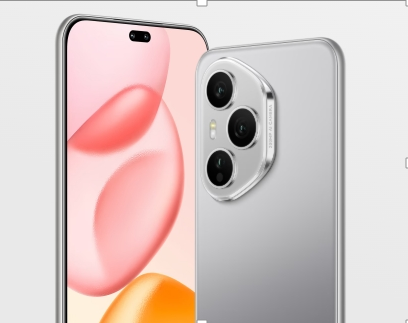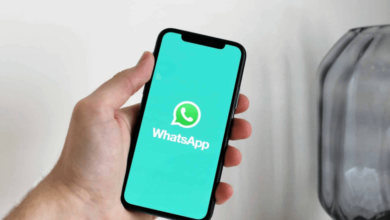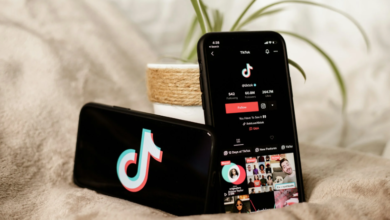What Daily Habits Shorten Your Smartphone’s Lifespan?

Smartphones have become indispensable in our daily lives, yet many of us unknowingly engage in habits that significantly reduce their lifespan. The average user replaces their phone every 2-3 years, often due to preventable issues rather than actual obsolescence. From improper charging practices to physical neglect, our daily routines can silently damage our devices. What’s particularly frustrating is that most of these damaging behaviors feel completely harmless in the moment. A night of charging here, skipping an update there – these small choices accumulate into major problems over time. The good news is that with some awareness and simple changes, you can easily extend your phone’s usable life by years.
Battery-Killing Habits You Need to Stop
Charging Overnight: The Slow Battery Killer
Leaving your phone plugged in all night might seem convenient, but it’s one of the most common ways people unknowingly degrade their battery health. Modern lithium-ion batteries don’t benefit from being kept at 100% charge for extended periods. When your phone reaches full capacity but remains connected to power, it enters a cycle of “trickle charging” – constantly topping up small amounts to maintain that 100% charge. This creates continuous stress on the battery cells, generating heat and accelerating chemical aging.
Letting Your Phone Die Completely Before Charging
The old advice about fully discharging your battery before charging is outdated and actually harmful for modern smartphones. Today’s lithium-ion batteries have a limited number of full charge cycles (typically 300-500 before significant degradation), and each complete discharge counts as one cycle. Letting your phone regularly drop to 0% puts unnecessary strain on the battery’s chemistry. Instead, try to keep your battery between 20% and 80% for daily use. This approach significantly reduces stress on the battery cells. If you accidentally let your phone die occasionally, don’t worry – it’s the habitual complete discharges that cause real damage over time.
Using Phone While Charging: The Heat Double-Whammy
Using your phone intensively while it’s charging creates a perfect storm of battery stress. The charging process already generates some heat, and when you combine that with processor-intensive tasks like gaming or video streaming, temperatures can rise dramatically. Heat is one of the biggest enemies of battery health, accelerating chemical degradation at an alarming rate. If you must use your phone while charging, stick to light tasks like reading or messaging. Better yet, let your phone charge undisturbed for shorter periods when possible.

Physical Damage Mistakes
Going Caseless: When One Drop Costs You
It’s tempting to use your phone without a case to enjoy its sleek design, but this is one of the riskiest choices you can make. Modern smartphones may have durable glass, but even a single drop onto a hard surface can result in costly screen repairs or internal damage. Cases don’t just protect against drops – they also prevent scratches to the body and camera lenses that can accumulate over time. If you absolutely must go caseless, at least use a skin or bumper to provide some basic protection. Consider that the cost of a good case is far less than even one screen replacement, making it one of the smartest investments for your phone’s longevity.
See also: Oase Pond Filters – Premium Filtration for Crystal Clear and Healthy Ponds
Exposing Your Phone to Extreme Temperatures
Your phone’s battery and internal components are sensitive to temperature extremes. Leaving your device in a hot car during summer or exposing it to freezing winter conditions can cause immediate and long-term damage. High temperatures can warp internal components and permanently reduce battery capacity, while cold temperatures can cause temporary shutdowns and screen issues. Avoid leaving your phone in direct sunlight, especially while charging. If your phone does get too hot or cold, let it return to room temperature gradually before using or charging it.
Software Abuse That Wears Out Your Phone
Never Closing Background Apps
While modern operating systems manage memory efficiently, keeping dozens of apps running in the background can still impact your phone’s performance and battery life. Many apps continue to consume resources by refreshing content, tracking location, or running background processes. Social media apps are particularly notorious for this behavior. Regularly swiping away apps you’re not using can help, but even better is using your phone’s built-in battery optimization settings to restrict background activity for power-hungry apps.
Ignoring System Updates
Those update notifications might seem annoying, but they often contain crucial performance improvements and security patches that keep your phone running smoothly. Manufacturers regularly release updates that optimize battery usage, fix memory leaks, and patch vulnerabilities that could be exploited by malware. Delaying updates means missing out on these improvements and potentially exposing your device to security risks.
Downloading From Untrusted Sources
Sideloading apps from outside official app stores might give you access to modified apps or early releases, but it comes with significant risks. These apps often contain malware that can drain your battery, mine cryptocurrency in the background, or even steal personal data. Even if the app itself seems harmless, it might not have gone through the same security checks as apps in official stores. Malicious apps can cause your phone to overwork its processor, leading to excess heat and battery drain.
Storage & Maintenance Mistakes
Filling Storage to 99% Capacity
Running your phone with nearly full storage doesn’t just limit how many photos you can take – it actually slows down your entire system and causes premature aging of the storage chips. When storage is nearly full, your phone has to work harder to manage files, leading to more frequent read/write cycles that wear out the flash memory. Aim to keep at least 10-15% of your storage free for optimal performance. Regularly offload photos and videos to cloud storage or your computer, and uninstall apps you no longer use.
Never Cleaning Your Charging Port
That accumulation of lint and dust in your charging port isn’t just unsightly – it can prevent proper connection with your charger, leading to intermittent charging and potential damage to the port. Over time, compacted debris can even bend or break the delicate pins inside the port. Use a soft-bristled toothbrush or plastic toothpick to gently clean out your charging port every few months (with the phone powered off). Avoid using metal objects that could cause shorts. If you notice your charger doesn’t click in securely anymore or only charges at certain angles, a thorough cleaning often solves the problem.
Conclusion
Breaking these common but damaging habits can significantly extend your smartphone’s usable life, saving you money and frustration. Simple changes like avoiding overnight charging, using a protective case, and keeping your storage manageable can add years to your device’s lifespan. For those looking for a phone built to last, the HONOR 400 Specs showcase impressive durability features including a robust 6000mAh battery and 100W HONOR SuperCharge technology that’s designed to maintain battery health even with frequent charging. By being mindful of these daily habits, you can ensure your device remains fast, functional, and reliable for years to come, reducing electronic waste and saving you from premature upgrades.






